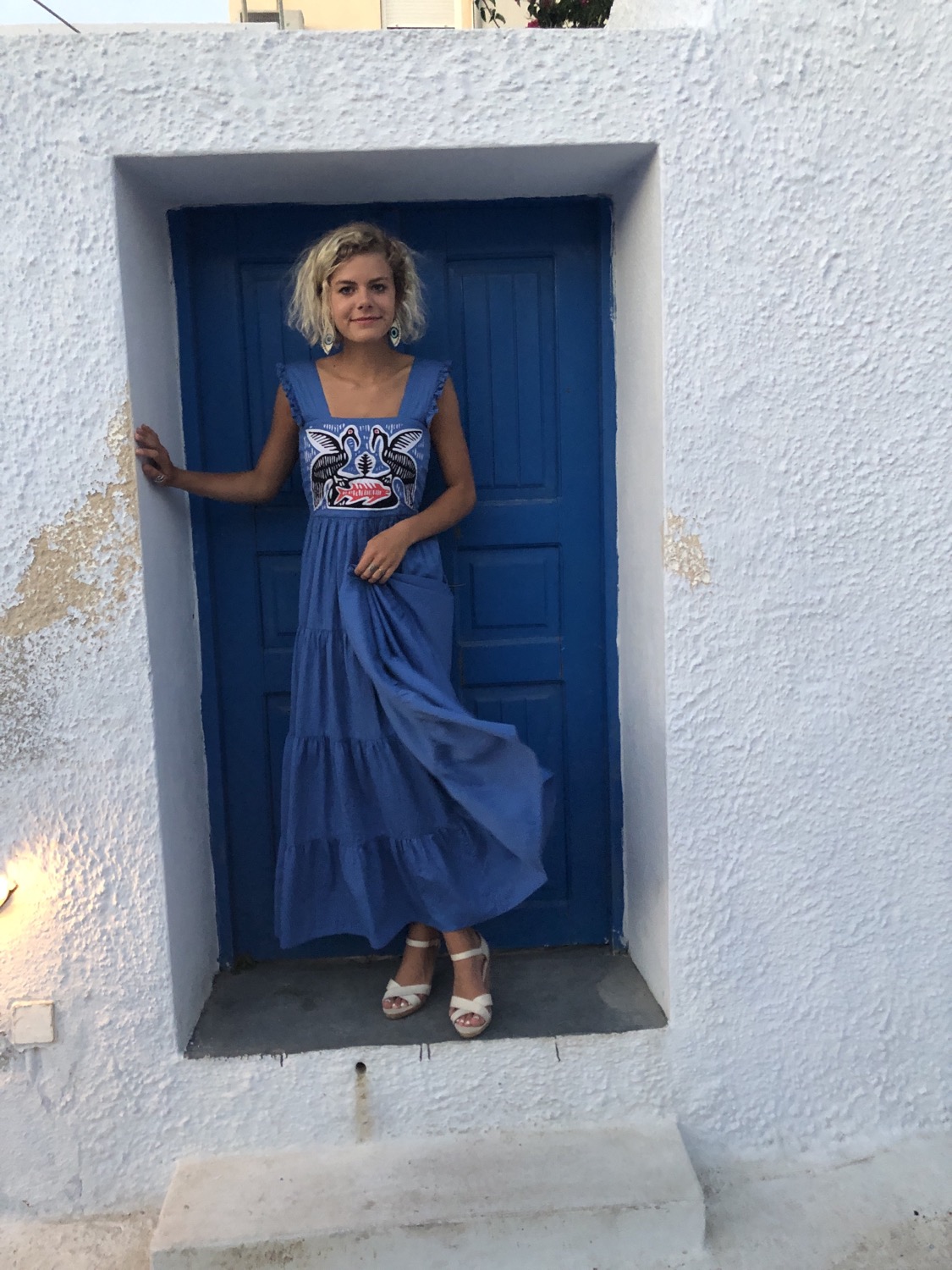Time and Thomas Müller: A Hunch for Hues
- lrechner

- Jan 10, 2021
- 4 min read
Updated: Jan 31, 2023
LA Now Lecture Series
February 25 2020

February Frieze LA 2020 Paramount Pictures Studios
Thomas Müller came back to visit his old stomping grounds of Loyola Marymount University today. One wonderful part of the evening, for me, was after the lecture when I followed Derrick Isonos, Ceramic Studio Technician, to the ceramics studio downstairs. There, people were wheel-throwing, carving, shaping, molding and he showed me a few of his pieces, which were very similar to Müller’s work. Their choices in blue and pink hues were quite similar as well as a few glaze choices. Isonos noted and named all of the types of clay - in pigment form - as a reference to Müller’s neon powder works. I have taken a few basic ceramics courses through Interlochen Fine Arts Camp, so I had a bit of background on this subject already; however learning about Isonos’ early vases and raku fired pieces helped me to gather a much better understanding of the guest artist.
After Müller pursued his BFA at the University of Washington and, later, his MFA at the Cranbrook Academy of Art he spent twelve years on faculty at LMU. Through his professional work, Müller follows closely to the words of Peter Voulkos, in that he “[challenges traditional interpretations of what the artist does.” As seen in his sculpture, Pea with Giraffes, Müller explores the idea of perspective on a miniature scale, playing with both light and depth to create this eerily perfect piece. Like Baudelaire, Müller explains, “there’s no one way” in art and, following Rauschenberg’s logic, this South-African ceramicist also creates emotion for the “gap’ between art and life.”
An idea of the lecture I found most compelling surrounded Müller’s ideas about his dual language barrier and his adoration of his umlauts. Weaving the words of the pop star’s song into his artwork, Müller’s inner voice. While on current events, this past Saturday, at Frieze Los Angeles 2020, three underground leaders in the art world spoke about how online channels impact collecting art and the importance of patronage.
At Paramount Studios, LOVE WATTS, art enthusiast, and the Whitney’s, art collectors, spoke about patronage and art collecting. The couple described themselves as, “obsessively curious” and they encouraged their audience to find passion everywhere. The couple collects a variety of mediums of art works - only following their love of social justice. Unlike Müller’s push away from his foundations as a ceramicist, RIC Whitney and Tina Perry-Whitney. I particularly enjoyed the piece where they described why “the arts give us an opportunity to expand the relationships that we do have,” and I agree that the arts are the eternal puzzle piece interlocking all elements of life.
Müller proved Tina’s point that, “galleries are important for the ecosystem.” This shapeshifting ecosystem is not only comprised of artists like the language loving, umlaut-enthusiast who spoke on Thursday; but the art world also includes unassuming rainforests, like Adam Arenson last Thursday. The ever-evolving art scene connects from Millard Sheets to the writings of Tosh Berman to the sewing symphonies of Lun*na Menoh and back again to Thomas Müller. He spoke mostly about treating the language as a being, instead of a word. I remember someone in class asked about the color of the balloons for his performance piece. In my mind, I see - and feel - his response of naming blue as “calm, serene, cloud-like” is true, and notice his misuse of orange while in residency.
As Tina Perry-Whitney explained during the Q & A session in the Sherri Hill Theater, “sometimes what’s right for you is that it’s pink and all the stuff you collect is pink.” This is because when collecting, “you just have to find what’s right for you.” I believe Müller also followed his intuition to choose the shades of glaze for the inside of his ceramic letters. A notion hammered into my brain during the lecture was, “you have to be able to live with the art.” Müller discussed this in relation to his rotting remnants of the tomato-elephant piece hidden under the plexiglass coffin. Similarly, the Whitney couple discussed living with a piece called Choke Hold, which was a startling neon piece. No matter the reaction, each individual piece of artwork - old or new - revives conversation.
The Whitney Couple’s Most Important Question for The Collecting?
“If this piece of artwork devalues, will you be okay with it?”
Following the lecture, I spoke to the Whitney couple, as well as the creative mind of Jordan Watson, owner of Love Watts. After a hug and the flash of a warm smile, I noticed that the Instagram tycoon had a different scene delicately painted on each nail. The Whitneys were warm and welcoming; their tone during our discussion was friendly and humble. I focused mostly on asking about the stories behind a few of the pieces they collected, as well as their thoughts about “organization” as an element to a piece of artwork - as I often admire the quiet collection of chaos, rather than the demand of pristine perfection. Their ideas about understanding more about the “behind-the-scenes journey” of the artist as a person, not only the ebb and flow of their visual work. Thoughts of Müller float in my head as powder-blush pink and just-after-goodnight-moon blue.
(Parting words)
The image below is a building I saw on the way to the Frieze this weekend. It reminded me of Millard Sheets and the iconic Home Savings brand sketch.



